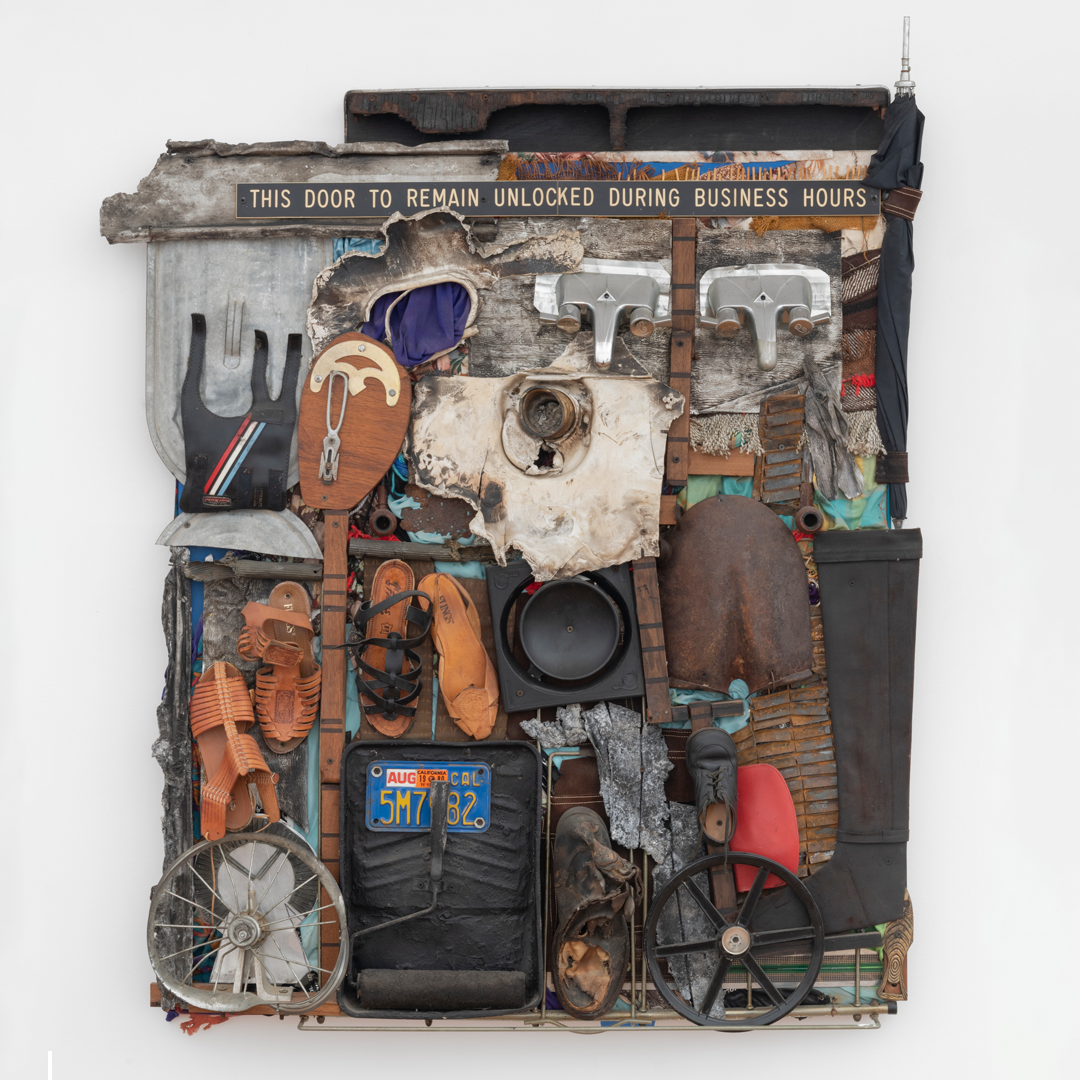
Before the lesson, prepare your supplies. Each student will need a regular piece of paper to write on and a piece of mixed media paper for their artwork. Have an image of Access projected on a screen large enough for all students to see. Refrain from adding any information about the image.
Close Looking Activity
Students are encouraged to spend time examining the image without talking
(a full 2–3 minutes). Invite them to approach the screen to see details. Ask them to write down all objects they see in the artwork.
Optional: Students can also draw details of the objects on their paper.
Quick Write
Write a story about the person(s) who owns these objects using the suitcase worksheet.
• Who are they?
• Did they carry these objects with them, or leave them behind?
Next, ask students to look at their story. If they included objects from the artwork in their story, ask them to circle them—for example, the paint tray or shovel. Switch the story with a partner. Give them time to read the story.
Questions to Dig Deeper
• Did you include objects in your story? Why or why not?
• Did your partner include any objects? Are they similar?
• Were you surprised at the direction your partner went in? Why do we attach meaning to objects?
• Why are some objects more valuable than others?
• Can an object tell you something about a person?
Before the lesson, prepare your supplies. Each student will need a regular piece of paper to write on and a piece of mixed media paper for their artwork. Have an image of Access projected on a screen large enough for all students to see. Refrain from adding any information about the image.
Art Activity: Emotional Baggage
Do we carry things with us that we cannot see?
We all carry emotional baggage: Guilt. Feelings of not belonging. A lack of confidence.
On your paper, write down the things that are hidden and weighing you down. How you write the words is completely up to you. Think about writing in different sizes, overlapping, changing direction, writing in a swirl, and filling your page. You will not be asked to share what you write down.
After you finish writing, cover your paper with a light layer of gesso. Some of the words will show through the gesso and you can leave some of the writing exposed.
While you wait for the gesso to dry, make a list of objects that are important to you. Think about things beyond electronics. On your paper, you will draw material possessions that are important to you. What story would you tell about your life using objects? What objects would you feature in your sculpture?
Contextual Information
“My primary concern is others getting into the act of doing something creative. Art is a tool to be
used to discover the creative self.” —Noah Purifoy, 1971
Noah Purifoy (1917–2004) lived and worked in Los Angeles and Joshua Tree, California. He worked with found objects, creating assemblages out of low-cost everyday materials, and used art as a tool for social change. The found objects in his work, often items that were left behind and discarded, comment not only on materiality but also on larger social and political issues. “He was influenced by the 1965 Watts Rebellion, six days of civil unrest by residents of Watts and other predominantly African American neighborhoods of the city in response to decades of racial injustice. In the event’s aftermath, the artist collected charred debris from the streets and assembled it into a series of sculptures, a technique that would define his practice for years to come.”
Source: MOMA
Purifoy gives us objects that allow us to consider the lived history of the people who owned them. By bringing the objects together, he gives viewers an opportunity to craft a narrative or a story.
Closing Thoughts
We make judgment calls based on material things. We use them to present versions of ourselves externally that we want others to see. We select clothing, hairstyles, and objects to communicate things about ourselves, but you cannot see what we carry on the inside.
Suggested Supplies
• Cardstock, mixed media paper, watercolor, or thick sketchbook paper
• Gesso or white acrylic paint
• Assortment of drawing materials: ballpoint pens, micron pens, Sharpies, colored pencils, acrylic paint, watercolor
Additional Resources
The One Thing You’d Save, by Linda Sue Park
The Things They Carried, by Tim O’Brien
The Great Gatsby, by F. Scott Fitzgerald
“We Wear the Mask,” by Paul Laurence Dunbar, 1895
Art of Digital Storytelling
Theda Sandiford, Emotional Baggage Carts
Student examples
Image: Access, 1993. Noah Purifoy. Mixed-media assemblage. Dallas Museum of Art, TWO x TWO for AIDS and Art Fund, 2019.10. © Noah Purifoy.